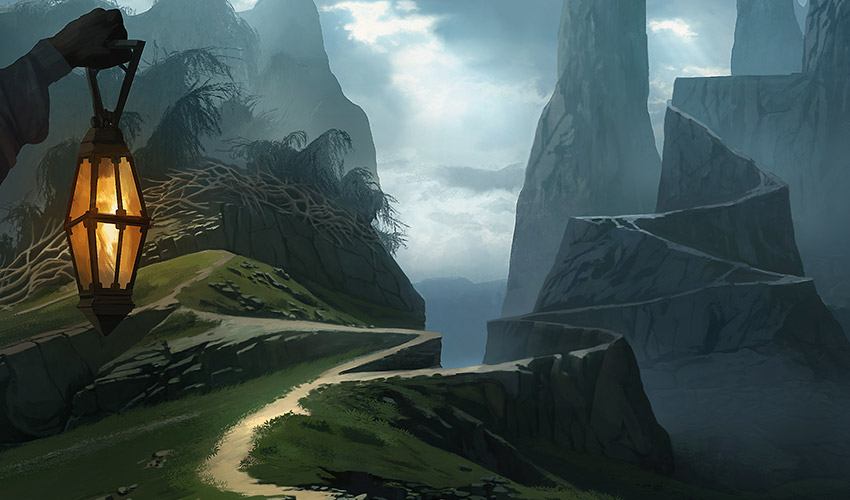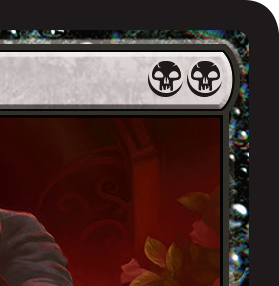CC the Problem?
Magic is a game of cascading choices. Where what you do in deck building affects what you can draw in the game which affects what you can or cannot cast.
Every. Decision. Matters.
As you try to pick which of these forks to wander down at junctions featuring hundreds of branching pathways in this choose-your-own-adventure novel of a game, sometimes there are paths that connect in ways you didn't even think about. The left turn you made all the way back in deck building deeply affects what you're able to do in Round 4 of a tournament.

Today, we're going to zoom closely in on one of those aspects. One that's easy to ignore or even not notice at all—and that I see bite people time and time again.
And that, dear readers, is the issue of casting spells with a heavy color requirement.
Getting a Gift
To demonstrate today, let's take a look at a flashy card from Aether Revolt. You may have already seen it—but if not, check out Gifted Aetherborn!
Two mana for a 2/3. Lifelink. Deathtouch. Even has the sweet Aetherborn Vampire creature type. It's got the makings of a Vampire Nighthawk.
It's fabulously efficient. You're going to want to play this in Limited, and you've got to be at least enticed to look at this for Standard.
But here's the deal about this card. There's something to be super aware of. Let's look at that upper right hand corner.

If you want to consistently play this card on turn two, that's going to take deck building understanding and commitment.
There are three major things to keep in mind when building with cards like Gifted Aetherborn. Let's take a look at them.
All About That Mana Base
The most important thing to playing cards like Gifted Aetherborn is to support them with your mana base. However, I often see cards like our Aetherborn Vampire friend tossed in without making any mana base tweaks.
If you want to consistently cast this on turn two, you're going to need a lot of sources.
In a great 2013 article by Magic mastermind Frank Karsten (an article that I reference back to quite often myself), he goes through the math. The conclusion he reaches is that, to be able to cast a CC (the R&D shorthand for two of any one color mana) card like Gifted Aetherborn on turn two in a 60-card deck with 90% likelihood, you need 20 mana sources of that color in your deck.
Let that sink in for a moment; 20 is a lot.
Let's say you're playing a two-color deck with access to eight dual lands. That still means you need twelve basic lands of that color to hit the desired number.
Limited is even more gnarly, with Frank concluding that you want fourteen sources to be able to hit that number on turn two. Considering that even going to ten basics of one color can be a stretch, fourteen is bordering on unrealistic.
Now, you can be willing to take a hit on consistency—and often, players do. There are good reasons to do so. However, this is mostly a good reality check of just how much commitment a card like this asks of you.
And speaking of reasons to take a hit on consistency...
Off the Curve
I can see the panic begin to set in your eyes. The urge to never touch a card that costs BB again for fear turn two will roll around and you won't be able to cast it. You've already begun digging a grave in your backyard for all your cards that cost two colored mana to cast.
Put. That shovel. Down.
It's important to understand the above numbers to comprehend what you're signing up for by playing these cards. However, it's not quite as dire as it may look.
You don't necessarily have to play these cards on curve. Imagine you build a deck with 4 Gifted Aetherborn and 4 Heart of Kiran.
Well, in a hand with both, if you haven't found your second black source yet, you can always play the Heart. (And, in fact, often you'd rather play the Heart first anyway.)
Often, the bump you get for colored mana symbols is a bump in power, so if they come into play a turn or two later that can be okay.
In Limited, if you're not going to be able to play Gifted Aetherborn on turn two, I would be careful counting it as a two-drop on your curve—but it's still strong enough on a later turn that you should likely play it anyway. Plus, some amount of the time you will be able to play it on turn two just fine.
One other note: going beyond cards that just cost two colored mana to cast, the more expensive something is to cast and the more reactive it is, the less you have to worry about this.
Let's look at some examples.
Verdurous Gearhulk does take two green—but by the time you hit five mana, you will often have that unless it's a splash. Murder does cost 1BB to cast, but you aren't really planning to cast it on turn three, so this really isn't an issue for that card.
It's always important to understand why something is an issue—and then just take it into context to see if it matters in each instance.
Symbol Overlap
One thing to be wary of is to not accidentally make it harder to play your spells.
Taking everything we've talked about so far, let's say you put Gifted Aetherborn into your deck, and you're okay not always casting it on time. Sure. Under similar principles, you put Aerial Responder into your deck. Okay, fine in a vacuum.
Each of these decisions on their own might be okay. But together, they create a more problematic tapestry. Can you guess why?
Here's the problem: on turn two, you want to cast Gifted Aetherborn for BB. On turn three, you want to cast Aerial Responder for 1WW. That really starts straining your mana! You need to draw at least one dual land to make that work, and even then you're relying on finding the right mix of lands. It's pulling you in two different directions
In Limited, I'd usually play both of these cards on power level and probably wouldn't cut one here. But if one of them was just slightly more marginal and I was looking for cuts, I would try and only keep one in my deck.
You need to look at the whole mix of what's going on in your deck to evaluate how often you can decide to chance it. Some risks can be fine, but every risk you take stacks on top of the ones before, and the more you take the more likely Risk Mountain is to start toppling over.
Double your Success
It's easy to play a game, not draw two black sources, and just chalk it up to color screw. But there's a reason why that happened—and it can be more in your control than you might otherwise think.
Building your deck with your cards' casting costs in mind will make both your Constructed and Limited decks better in ways that may seem subtle. Give it time, pay attention, and you will begin to notice the difference...and that can be the difference between winning and losing.
Hopefully you enjoyed this look at casting color-intensive cards. Apply this to deck building in a Prerelease at your local game store this weekend!
Have any thoughts or questions? You can always reach me my sending me a tweet, asking me a question on my Tumblr, or emailing me in English at BeyondBasicsMagic@gmail.com.
I'll talk with you again next week. Have a great Prerelease, and may all of your Gifted Aetherborns be castable!

